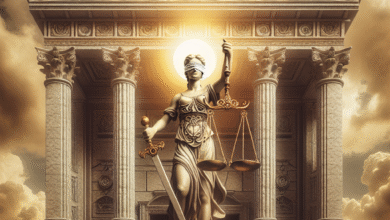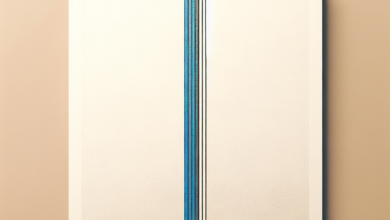The Clockwork Killer
In the dimly lit alleys of New London, where shadows danced like phantoms and the scent of oil and rust lingered in the air, a legend began to emerge—a legend whispered among the impoverished citizens and the affluent in their glimmering, gaslit parlors. They spoke in hushed tones of "The Clockwork Killer," a master of machinery whose victims always turned up with intricate clockwork mechanisms embedded in their bodies, as if they had been transformed into mechanical marvels before their untimely demise.
Detective Clara Hawthorne had heard the tales. She knew them too well. The city had always had its share of crime, but something about this particular case pulled at her like a string unraveling from a carefully stitched seam. She’d lost good friends to the dark underbelly of New London, and with each murder attributed to this elusive figure, her resolve only deepened.
It was a rainy evening when the latest body was discovered. Clara stood under the flickering gaslight, her trench coat soaked from the downpour. Constable Grey, a wiry man with a perpetually anxious demeanor, gestured towards the body lying against a cobblestone wall.
"Another one, ma’am," he said, his voice barely rising above the splattering rain.
Clara knelt beside the figure, peering through the dim light. The body was that of a young man, perhaps in his late twenties, dressed in fine but now tattered clothes that spoke of better days. His skin was pale, as if the life had been drained from him forcibly. But what caught Clara’s breath was the intricate mechanism embedded beneath the skin of his forearm—a series of gears and cogs, glinting in the hazy light like a cruel joke.
"This makes five in as many weeks," Clara murmured, her fingers brushing against the cold metal. "And the authorities are still dismissing it as an unfortunate coincidence."
Constable Grey shifted uncomfortably. "What do you think it means, Miss Hawthorne?"
A chill crept down Clara’s spine. She looked into the young man’s lifeless face, pondering the transformation—from a living being into a grotesque piece of machinery. “It means we’re looking for someone smarter and more dangerous than we anticipated. They aren’t just killing; they’re changing something fundamental about life and death.”
The following weeks saw Clara embroiled in a web of secrets, searching for clues among the fog and grime of New London. She visited the local clockmakers, hoping for leads that would shine light on the clockwork contraptions found on the victims. The shops reeked of sawdust and oil, with shelves burdened under the weight of oddities—a kaleidoscope of timepieces ticking in a disjointed symphony.
“Ah, Miss Hawthorne,” said Tobias Withers, a wiry clockmaker with a toothy grin. “Here again, are we? What can I do for you today?”
“I need to know more about the mechanisms found on the bodies,” Clara replied, her tone firm. “Do you recognize this gear?”
Tobias examined the photograph she handed him. His brow furrowed, an unsettling shadow spilling across his face. “It’s exquisite work, isn’t it? But—one doesn’t just find craftsmanship like this in any common workshop. You’re looking for a master, a true artist of the gears.”
"Do you know anyone who might fit that description?"
He hesitated, casting a wary glance around the shop, ensuring they were alone. "There’s a fellow—a recluse of sorts—who crafts unique pieces out in the old industrial district. His name is Ashford. They say he’s a genius, but also a madman. Some believe he can manipulate time itself through his creations."
“Time manipulation?” Clara scoffed. The idea had the air of a myth. But desperation, mixed with a hint of curiosity, drove her forward.
“Just rumors,” Tobias said, waving a hand dismissively. “But if it’s clockwork you’re after, Ashford may be your best bet.”
With a renewed sense of purpose, Clara ventured into the heart of the industrial district. The streets were wider, lined with abandoned factories and the echoes of progress long forgotten. She walked beneath the crumbling brick arches, made her way past rusted machinery, and arrived at a nondescript door with peeling paint.
Knocking, Clara felt her heart race. After an unbearable pause, the door creaked open to reveal a man cloaked in shadow. His pale skin seemed to glimmer under errant beams of light; his sharp features were accentuated by a wild mane of dark hair.
“Detective Hawthorne, I presume?” His voice was smooth, almost melodic.
“I am looking for answers regarding the clockwork murders,” Clara said, her eyes narrowed. “I’ve been told you might be involved.”
A bemused grin danced across Ashford’s lips. “You’re brave to come here, detective. But tell me—what is it you seek? The lofty idea of justice? Or perhaps a deeper understanding of the art of clockwork?”
“Both,” Clara replied, keeping her gaze steady. “But first, I want to know if you had a hand in these murders.”
“I craft wonders,” Ashford said, stepping back into the shadows. “Some may see them as abominations, but I see beauty. Your victims adorned with gears—a metaphor for the human condition, don’t you think? A reminder that we are all ticking clocks, fighting against the inevitable.”
“Creating life from death is not beauty!” Clara shot back, frustration boiling over. “It’s grotesque!”
Ashford’s smile widened, a flicker of madness dancing in his eyes. “To the untrained eye, perhaps. But there’s elegance in melding flesh with machinery! Tell me, detective—what do you know of the origin of time itself?”
She felt the air thickening. This man was a puzzle, shifting and elusive, and she was losing her grip. “You’re evading the question. I need to know who you’ve been working with.”
“Ah, but to answer that, it requires understanding the intricacies of my creations,” Ashford replied, his presence darkening the room. “Each component tells a story. And perhaps, your story intersects with the pieces you’ve failed to assemble.”
Clara’s investigation led her further down a rabbit hole of secrets, but the more she uncovered, the deeper the shadows closed in around her. Each step brought her closer to Ashford’s world—artistry mixed with madness. Nights blended into days as she poured over blueprints of timepieces and clockwork monstrosities found scattered through the city.
Days turned into weeks, and the press had caught wind of the growing panic. Headlines screamed of “The Clockwork Killer,” leading to misinformation and chaos. Citizens barricaded themselves in their homes, fearful of the unseen predator lurking among them.
Driven by urgency, Clara returned to confront Ashford, unsettled by the depth of his presence and the allure of his madness. In the cold light of day, she found herself again at his workshop, ready to face whatever the man had to reveal.
“You’ve come back, detective,” Ashford said, an eager gleam in his eye. “Curious about my work?”
“Enough games!” Clara’s voice rang with authority. “How many innocent lives have been taken to fuel your madness?”
“Every life is but a fleeting moment, darling Clara,” he retorted, his tone dripping with condescension. “Mortality is merely a blink in the vast expanse of existence. And my creations—they are the future, a testament to transcendence!”
“Transcendence?” Clara echoed, her heart racing. “Is that what you call it? You twist the lives of those who have already lived and corrupt them into things that shouldn’t exist!”
Ashford leaned closer, his breath hot and urgent. “You misunderstand! They were children from a world that failed them. I gave them something they never had—a second chance within a magnificent form. The city doesn’t deserve to cast aside those who knew only pain.”
“By killing them?” Clara spat. “By turning their bodies into machines of your torment?”
He straightened, a flash of rage igniting his features. “They are not torments, but marvels! Each one breathed life into my art! But perhaps you’re right. There is a flaw in my design. It needs to be perfected.”
“Perfected?” She stepped back, her fingers brushing against her revolver concealed beneath her coat. “You think killing is perfecting? You’re mad!”
“Madness is merely a different perspective,” he smirked, his posture shifting like a predator sensing vulnerability. “You’re on the right path, detective. But if you want to see the full extent of my masterpiece, you must come with me!”
Clara’s instincts wailed with a warning, but curiosity gripped her, leading her onward. Ashford led her through the dark corridors of his workshop, filled with metal limbs and twisted forms, bodies suspended like marionettes waiting for a master hand to give them life.
“What are you doing?” Clara’s voice cracked, terror rushing through her veins. “This isn’t right!”
“It is art! It is my legacy!” he shouted, gesturing wildly. “I’ll show you. Come, witness the beauty I can create—a first-hand experience of my true work!”
Before she could protest, Ashford opened a heavy door that creaked ominously. Clara stepped inside an expansive chamber, filled with strange machines and half-finished constructs—horrifying beings whose eyes had been replaced by clock faces. In the center, a large contraption hung, a chaotic amalgamation of gears and flesh thumping like a heartbeat.
“A prototype,” Ashford exclaimed with pride, his eyes gleaming. “I call it ‘The Clockwork Soul’. It embodies the desires, dreams, and nightmares of every person I have encountered. And soon, it will be my magnum opus!”
“Let them go!” Clara cried, clutching the revolver tightly. The air smelled of clock oil and desperation, the tension palpable. “You can’t keep doing this!”
“There’s no need for violence, Clara,” Ashford replied with an unsettling calm, moving closer. “You’ll see soon that their transformation isn’t an ending; it’s merely the beginning of something greater than humanity could ever hope to achieve.”
“I said let them go!” she shouted, her voice rising.
With a swift motion, Clara drew her weapon, but Ashford was quicker, waving a hand that flicked a switch on the massive machine. Suddenly, the chamber erupted in a cacophony of gears turning, metal grinding against metal, and the lights flickered erratically.
“This is it!” Ashford bellowed, his eyes wild with feverish zeal. “Witness the birth of a new era!”
As the machine whirred to life, Clara fought against her fear, focusing on Ashford. “You’re mad! This is insanity!”
“Madness is the path to genius!” he proclaimed, flinging his arms wide. In his eyes, Clara saw a glimmer of truth—a belief so strong it threatened to ensnare her.
In an instant, Clara realized the room was not just filled with turned bodies; they were pieces of a diabolical puzzle feeding into his insanity. “You don’t have to do this!” she shouted again, heart racing.
With a desperate pull of the trigger, Clara shot at the nearest machine, the bullet ricocheting off steel as sparks flew. The instant the machine cracked, chaos erupted—the whirring gears fell mute, and from the depths of the machine, a piercing, sorrowful wail mingled with the metallic clank of dying machinery.
“You’ll regret this!” Ashford screamed, but Clara was already moving, adrenaline guiding her steps through the maelstrom of chaos.
The machines shuddered in reaction to the disruption, lights flickering menacingly as gears seized. Clara turned, disorienting Ashford momentarily. With decisive steps, she forced him back until he stumbled against the remains of his creation.
“What are you doing?” he spat, finding balance just as Clara turned to flee.
“No! I will not let you continue this madness,” Clara cried over her shoulder. “It ends here!”
But as she ran, the machines began to fall apart, collapsing into chaotic heaps of metal that shuddered and surged like angry beasts. The eldritch creations, cursed animations of a world gone mad, responded to their master’s distress. Clara raced toward the chamber’s exit, her heartbeat pounding ominously as the cacophony swelled behind her.
With a final push, she burst out of the chamber and yanked the door shut behind her. “You won’t win!” she shouted, wild determination fueling her escape.
Yet her breath caught in her throat as she found herself back in the workshop, the sound of the thrumming creation roaring defiantly behind her. Clara’s senses blazed. She couldn’t let Ashford’s madness reach the streets.
Reaching into her coat, Clara withdrew her revolver, another shot ringing out toward the walls that housed his nightmares. She fired again and again, the echo of each bullet resonating like a sentry’s warning while the machines shook and threatened to drown in chaos, swirling in a tempest of metal and flesh.
The chamber flooded with clashing lights and the darkness seemed to writhe with unnatural life. The sounds crescendoed into a clarion call, signs of Ashford’s creations falling apart. In the end, it would not be her death, but a reflection of all that Ashford aspired to be, twisting in cacophony until silence prevailed.
As a cacophony of screaming gears and whirring machines erupted around her, Clara stumbled back into the cold night air, gasping for breath. She turned back, shooting the last of her commitment into Ashford’s laboratory. With a deafening explosion, the chambers shuddered as they erupted, fiery remnants of madness trailing into the starless sky.
“Goodbye, Ashford!” she shouted as smoke and debris billowed through the city.
In that moment, a fragment of Ashford’s tortured soul reverberated in Clara’s mind. They had both danced precariously close to madness. But she had chosen a different path—a choice of humanity over machinery, life over artifice.
The clockwork killer had fallen silent, leaving only the echoes of a haunting legacy behind. Justice, while imperfect, had prevailed as the survivors coiled their hopes around old legends, quietly weaving the streets of New London once more.
In the weeks to follow, stories emerged, varying like the gears that had once ruled the darkness. Some hailed Clara as the champion who had fought against the grim machinations of the killer, while others whispered that a part of Ashford’s genius still lingered under the surface.
But Clara knew the truth—light would always chase away the shadows. And for every clockwork killer that dared to rise, there would be a detective ready to fight.
As the machinery of life ticked on, she stood tall, determined not just to seek justice, but to ensure that human heartbeats remained the music of the world—that the clock of existence continued ticking, unhindered by the specter of monstrosity.
In the city of New London, the tales would forever entwine the name of “The Clockwork Killer” with the bravery of one woman willing to stand against the mechanical horrors of a madman’s dream. Clara Hawthorne, the guardian of humanity, would not soon be forgotten.
Thus, the tale ended, but the echoes of The Clockwork Killer still reverberated, a chilling reminder of the thin line that divided genius from madness, art from horror, and life from machinery. In a world that had once embraced both the beauty of creation and the fragility of life, the balance would forever depend on the courage of a few brave souls willing to confront the darkness.
And as night surrendered to dawn, new stories began to weave themselves in the hearts of the people, whispered releases from the dark chain of fear that had once clenched the city. For as long as life persisted, as long as there were tales to tell, the spirit of resistance would endure.





